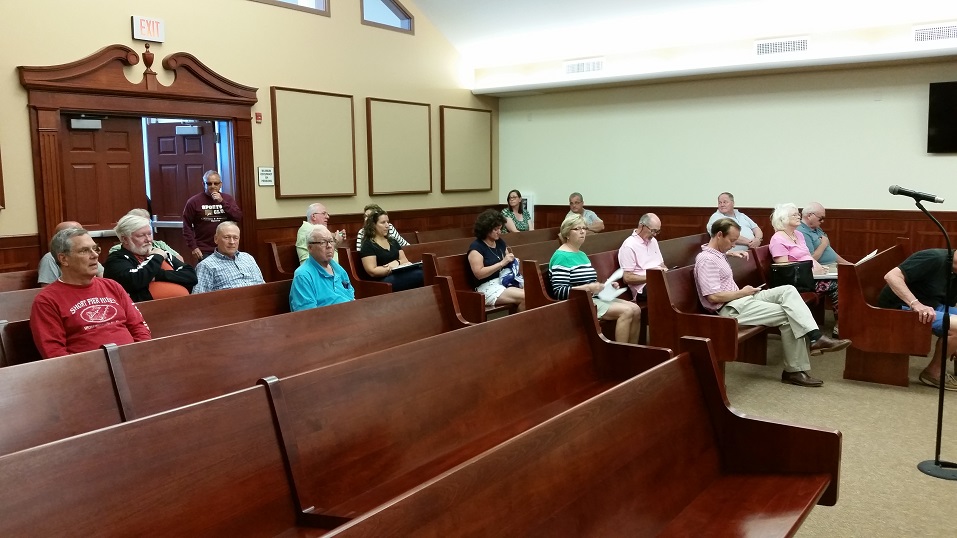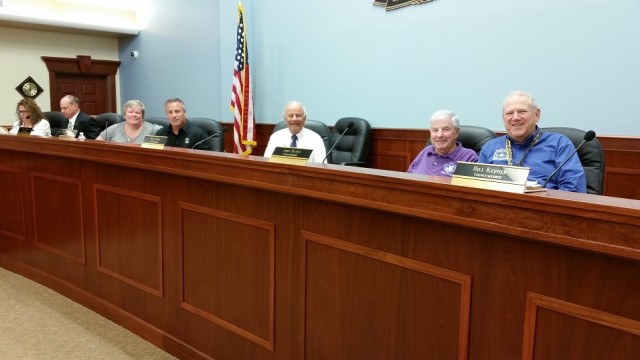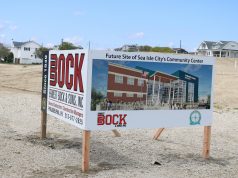By Donald Wittkowski
Culminating months of intense debate about “monster homes,” City Council approved a zoning ordinance Tuesday that slightly increases the maximum footprint for the construction of new houses in Sea Isle City.
The measure, adopted by a 4-1 vote, attempts to strike a balance between Sea Isle’s small-town charms and the demand for bigger, more upscale housing in the beachfront community.
The ordinance modifies another zoning measure, approved by Council last January, that set the standards for what is known as the floor-area ratio, or FAR, in home construction.
Under the new requirements, a FAR of 0.8 will remain in place for single-family homes and duplexes that have three parking spaces per unit. However, the FAR has been increased to 0.85 for single-family homes and duplexes having four parking spaces per unit.
The increase from 0.8 to 0.85 would add an extra 250 square feet to the size of a duplex. Council members characterized it as a modest increase that would not result in a new generation of gigantic homes overwhelming the barrier island.
Council President Jack Gibson insisted that the increase does not mean the difference “between monster homes and non-monster homes.”
Gibson and other Council members who supported the ordinance said the higher FAR still allows the city to maintain control over the size of new homes in Sea Isle’s brisk housing market.
“We all recognized that something needed to be done,” Councilwoman Mary Tighe said.
Councilman John Divney, who cast the lone dissenting vote, said he saw no need to increase the maximum FAR from 0.8 to 0.85.
“I thought what we had was sufficient,” he said.
Divney serves as Council’s representative on the Planning Board. The Planning Board had recommended a FAR of 0.7, but Council settled on a compromise of 0.8 in January after some members of the community had advocated boosting it to 0.9.
The FAR is the habitable floor space in a home divided by the lot size. The higher the FAR, the bigger the home can be.
At one time, Sea Isle had a uniform FAR of 0.7, but the requirement was abolished in 2010, leaving the city with no standard for new construction. The era of the so-called monster home followed, profoundly changing the look of some parts of town. Councilman William Kehner, for instance, noted that one house was built with an unofficial FAR of 1.26.

As complaints from the public about monster homes intensified, Council decided to reinstate a uniform FAR, settling on 0.8 last January. The revised ordinance approved Tuesday, raising the maximum FAR to 0.85, reflects further refinements in response to the demands of the housing market, Council said.
Among other benefits, it will give homeowners more flexibility to add architectural amenities — such as decks and “bump-outs” — that are highly coveted in upscale houses, according to Council.
Council members also said the ordinance includes provisions to help with the city’s parking problems.
The vote Tuesday followed an hour-long public comment session that underscored differences in the community about the impacts of a higher FAR.
Opponents of the ordinance argued it will lead to overcrowding and more parking headaches, while supporters maintained it will stimulate growth in the housing market and more economic development.
Dan Tumolo, a resident of Pleasure Avenue and the president of the Board of Education, called on Council to let the voters decide the FAR issue in a public referendum.
Tumolo said the controversy has pitted “neighbor versus neighbor” and “resident versus business owner.”
“This is not the same town we had two, three years ago because of this issue,” he said.
Kevin Lavan, who lives on Landis Avenue, demanded to know why Council had deviated from the maximum FAR of 0.8 approved just five months ago.
“What criteria did you evaluate to decide that .85 is the best answer?” Lavan said.
Gibson later asked Lavan whether Council’s lengthy discussion about the new ordinance answered his question. Lavan thanked Gibson, but politely said no.
Members of the business community, along with some members of the public, came out in support of the higher FAR, saying it was crucial for attracting more investment and visitors to town.
“Sea Isle’s really popular. A lot of people want to come here. We’re very fortunate to have that,” said Michael Monichetti, the owner of Mike’s Seafood Restaurant.
Christopher Glancey, president of the Sea Isle City Chamber of Commerce, told Council that the community has been consumed by the FAR debate for too long. He said the town should instead focus its efforts on updating Sea Isle’s master plan to develop a long-term strategy for growth.
“To get bogged down with .8 and .85, it doesn’t make a lot of sense to me,” Glancey said, adding that he thought the slightly higher FAR wasn’t significant.
According to Glancey, local residents, the business community and the Chamber of Commerce should collaborate on the master plan to create a unified vision for Sea Isle in the next 10 years.
Council members seemed to agree with Glancey about the need for an updated master plan. They said the city should take a broader approach toward its planning and zoning issues instead of following a “piecemeal” approach.
Sea Isle last updated its master plan in 2007. It is currently going through a “re-examination” to bring the document in line with present-day demands for zoning, planning, economic development, parking, traffic, housing density and other key issues.
“That’s why we have master plans, not to rush something through and change it again in two months,” Councilman Frank Edwardi said.








